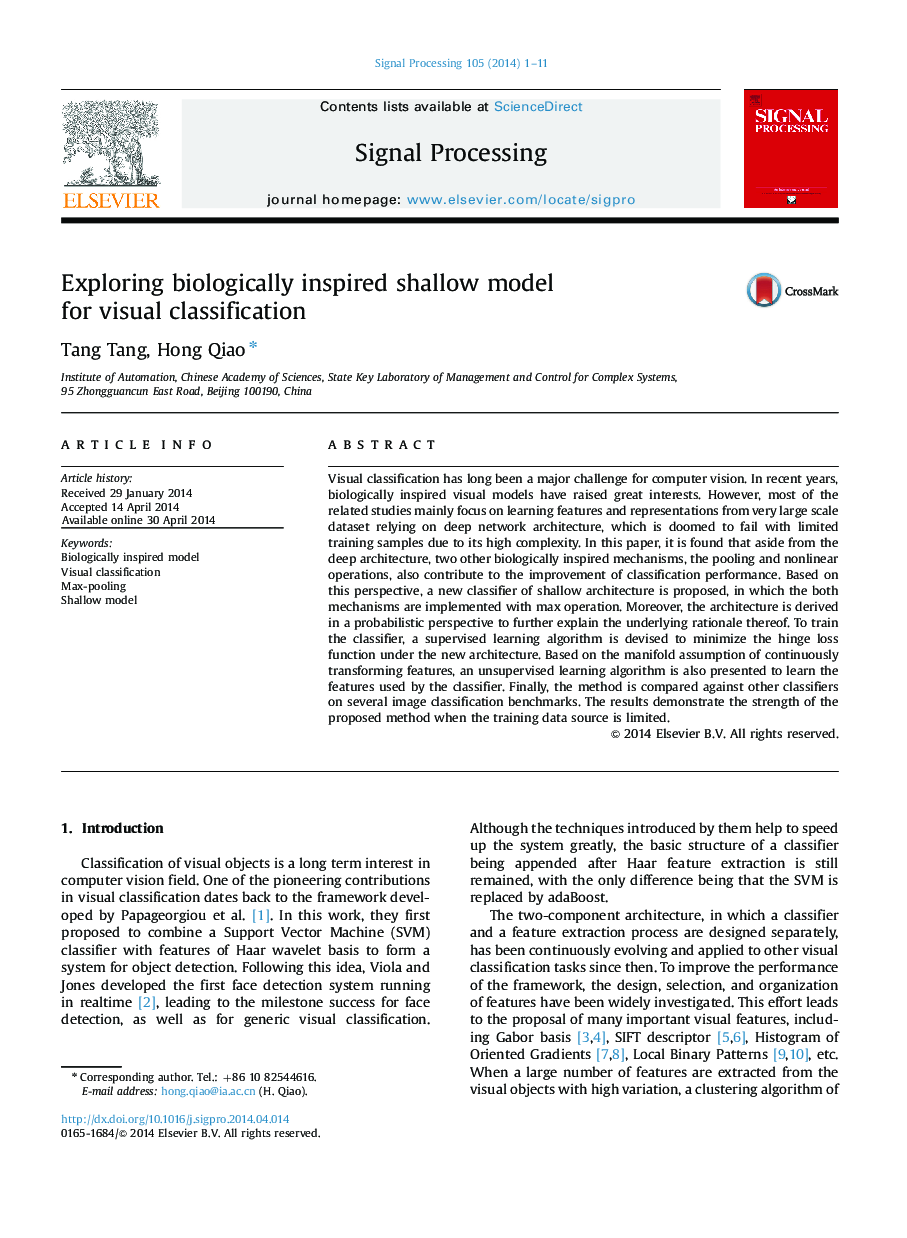| Article ID | Journal | Published Year | Pages | File Type |
|---|---|---|---|---|
| 563694 | Signal Processing | 2014 | 11 Pages |
•A new classifier for visual classification based on biologically inspired mechanisms is proposed.•The classifier is interpreted in a probabilistic inference perspective.•The classifier is designed to leverage redundant visual features sufficiently.
Visual classification has long been a major challenge for computer vision. In recent years, biologically inspired visual models have raised great interests. However, most of the related studies mainly focus on learning features and representations from very large scale dataset relying on deep network architecture, which is doomed to fail with limited training samples due to its high complexity. In this paper, it is found that aside from the deep architecture, two other biologically inspired mechanisms, the pooling and nonlinear operations, also contribute to the improvement of classification performance. Based on this perspective, a new classifier of shallow architecture is proposed, in which the both mechanisms are implemented with max operation. Moreover, the architecture is derived in a probabilistic perspective to further explain the underlying rationale thereof. To train the classifier, a supervised learning algorithm is devised to minimize the hinge loss function under the new architecture. Based on the manifold assumption of continuously transforming features, an unsupervised learning algorithm is also presented to learn the features used by the classifier. Finally, the method is compared against other classifiers on several image classification benchmarks. The results demonstrate the strength of the proposed method when the training data source is limited.
